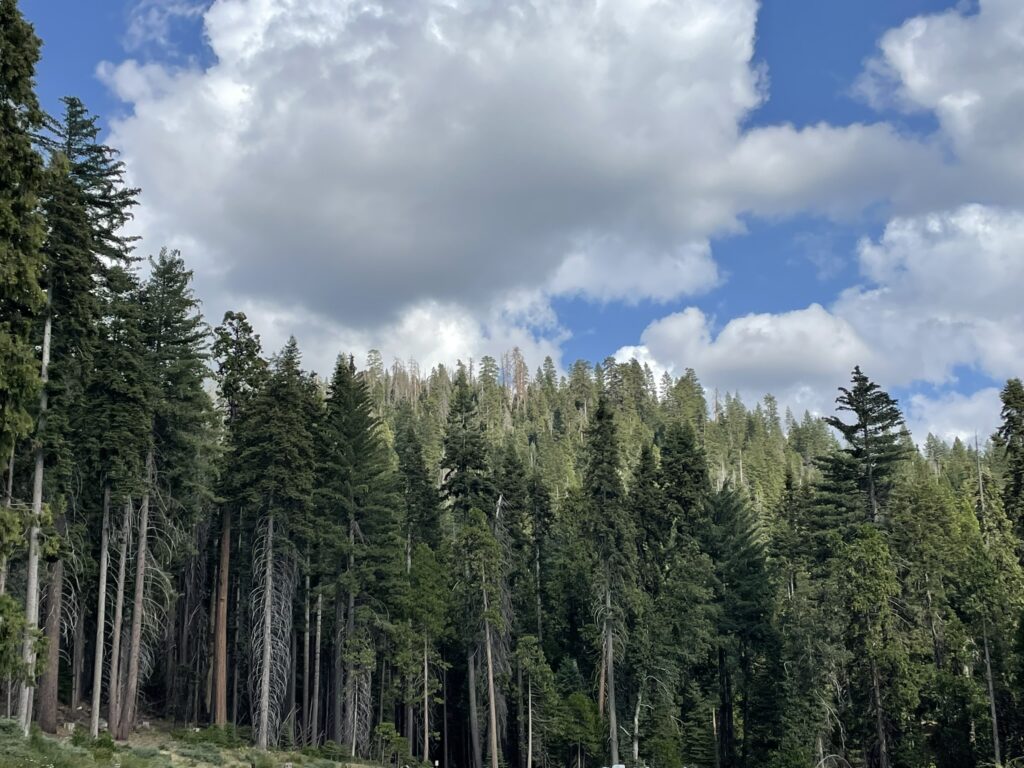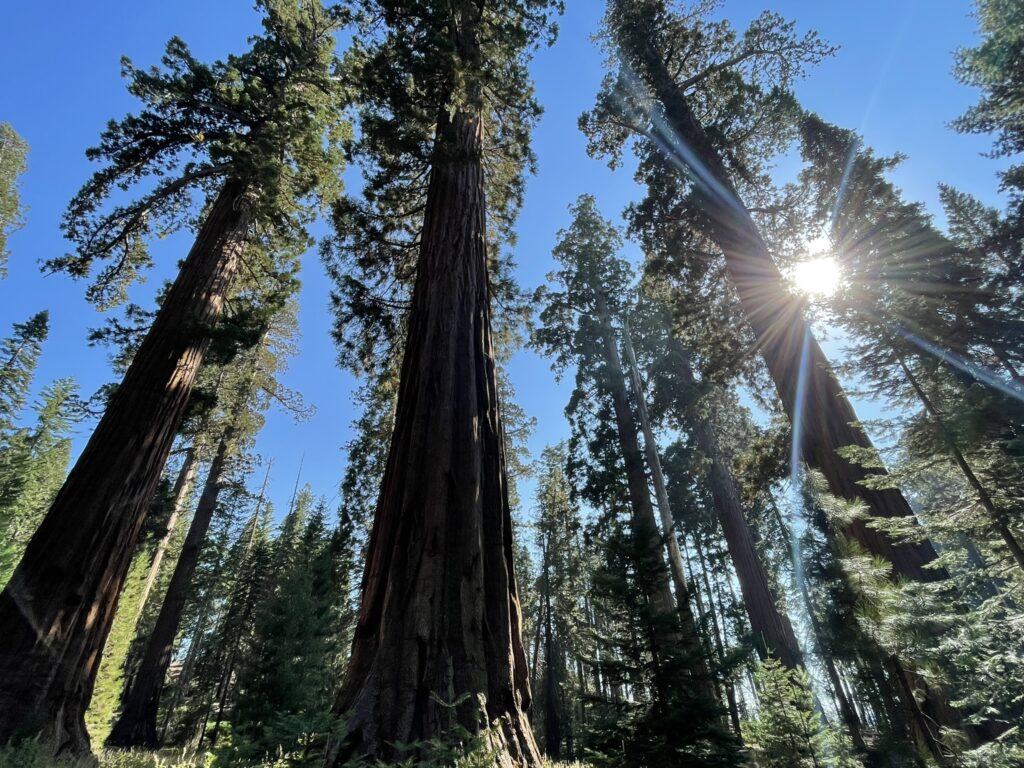Amendment proposed to improve protections for existing old-growth forests, and to foster conditions for future old growth-forests across all 128 units in the National Forest Service
Summary
The Department of Agriculture has proposed the “Land Management Plan Direction for Old-Growth Forest Conditions Across the National Forest System #65356 (link to draft) which will amend the National Forest System’s “Land Management Plans” to include frameworks and strategies for the conservation of old growth forests, create conditions for future old growth forests, and establish tools to monitor these efforts across all 128 National Forest units. The proposed amendment is now undergoing an environmental impact assessment as per the National Environmental Policy Act, which requires all federal agencies to submit an “Environmental Impact Statement” for any proposed project before it is implemented.
Timeline
- December 20, 2023: The Department of Agriculture filed a “Notice of intent” with the Federal Register. This initiates the initial scoping process for the draft of the “Environmental Impact Statement (EIS)” as it relates tot he proposed old-growth amendments for the National Forest Service.
- June 21, 2024: The Draft “EIS” was filed with the Federal Register and was made available for public commenting and objections for 90 days. The commenting period has now been closed.
- Current status: The Final “EIS” is being prepared following the initial review and public comment period. It is estimated the Final “EIS” will be filed with the Federal Register between December 2024 and January 2025. If the amendment is approved then implementation will proceed shortly after.
Areas Affected
All 128 National Forest units in the United States will be affected by this amendment. Goals and implementation may be adapted depending on the local and geographical needs of a particular unit.
Why
This proposal is in response to Executive Order 14702 from President Joe Biden on April, 2022 titled “Strengthening the Nation’s Forests, Communities and Economies,” which required that the Department of Agriculture take an inventory of the old-growth forests in the NFS, and conduct a threat analysis of that inventory. Of the 144 million acres of forested land in the NFS, the inventory showed there are 24.7 million acres of old-growth forests, and 68.1 million acres of mature forests. There are many threats to old-growth forests including insects and disease, extreme weather, droughts, tree-cutting, roads, and urban development. However, the analysis determined that extreme wildfires are currently the biggest threat to old-growth and mature forests. Likewise, it was identified that the current land use management plans of the NFS are not sufficient to mitigate these threats to old-growth forests.
Likewise, the characteristics of old-growth forests are distinct from younger forests, and have a unique impact on maintaining healthy ecosystem, increasing biodiversity, and provide support for local communities and cultural hubs. At the moment there is no direct language pertaining to the management of old-growth forests in the land management use plans
As a result of the inventory and threat analysis, the Department of Agriculture has proposed “Land Management Plan Direction for Old-Growth Forest Conditions Across the National Forest System #65356.” This amendment will establish a set of national framework and strategies across all units in the NFS, which will provide direction on how to maintain and develop current old-growth systems, foster new old-growth systems, protect them from threats of wildfires and other environmental threats, and create more resilient old-growth forests. Indigenous perspectives and knowledge will be included in the planning process.
Goals
Details on the proposed amendment can be found on the Draft Environmental Impact Statement. The primary goals of the project are:
- Support existing old-growth forests and improve their protection against environmental stressors.
- Foster environments that support future old-growth conditions.
- Include Indigenous and Tribal knowledge in the planning and implementation of old-growth forests.
- Support co-stewardship of project initiatives with Tribes, local governments, and public stakeholders.
- Establish a framework to monitor and track the success of these projects across all units.
Concerns
Many concerns have been shared through public comment and review over the lack of language within the amendment that strictly prohibits the logging of old-growth forests except when critical for public safety (dead trees, fire mitigation). Likewise, there are concerns over the limited protections issued for “mature” forests, which do not meet the same definition as old-growth but are still critical and at risk of logging and clear cutting.
The DEIS states that “common vegetation management objectives and practices will continue under all alternatives, both within and outside of old-growth…” For the NFS, vegetation management can include activities such as logging and clear cutting for timber production, building recreational trails, ski runs, roads, or other infrastructure activities deemed “necessary and appropriate.” The public has made it clear that they do not find this acceptable and they expect revisions to the Final EIS amendment to include language that restricts all commercial logging or cutting of old-growth forests. Otherwise, it defeats the very purpose which is to preserve the integrity of and increase our old-growth and mature forests.
Impacts
Ecological Impacts (see draft)
- Given the current DEIS language, common vegetation management practices would still occur on old-growth forests, allowing for logging and clear cutting of the oldest trees in the world.
- Expected to positively impact the biodiversity of old-growth habitats and the ecosystem services they provide.
- Will require modified wildfire management practices as 25% of old-growth forests are located within the wild-urban-interface (where wild and urban areas meet). Prescribed fires and thinning may be used to mitigate fire risks.
- Projects will have negligible or beneficial effects for species listed as endangered that rely on old-growth habitats.
Cultural Impacts (see draft)
- Each unit must have one co-stewardship project with local Tribes.
- Projects must consider Tribal priorities and utilize local Indigenous knowledge, which is to be seen as an equal with Western science.
- The proposed amendments would not change or interfere with any existing Treaty resources, Tribal access to Treaty resources, areas of Tribal importance, or sacred sites for local Indigenous communities.
Socioeconomic Impacts (see draft)
- The impacts to local economies and communities must be considered in conjunction with all project plans, including their affect on tourism, recreation, resource management, timber, and other economic activities.
- The impacts to Tribal and Indigenous communities must be considered with all project plans, including their affect of traditional and cultural customs that rely on old-growth forests for sources of income and economic growth.
- Mineral and energy operations may still have an impact on individual units of old-growth forests. However, collaboration with mining operations on compliance with environmental laws and project directives should help reduce any adverse affects.
How To Get Involved
The public comment period has closed for the Draft EIS for the National Old-Growth Amendment, which lasts for 90 days after the draft release. The comments will be reviewed and considered for any revisions before presenting the the Final EIS in December 2024/January 2025.
Links
- Project page of the Land Management Plan Direction for Old-Growth Forest Conditions Across the National Forest System
- PDF on the National Old-Growth Amendment
- National Forest Service – Schedule of all proposed actions

